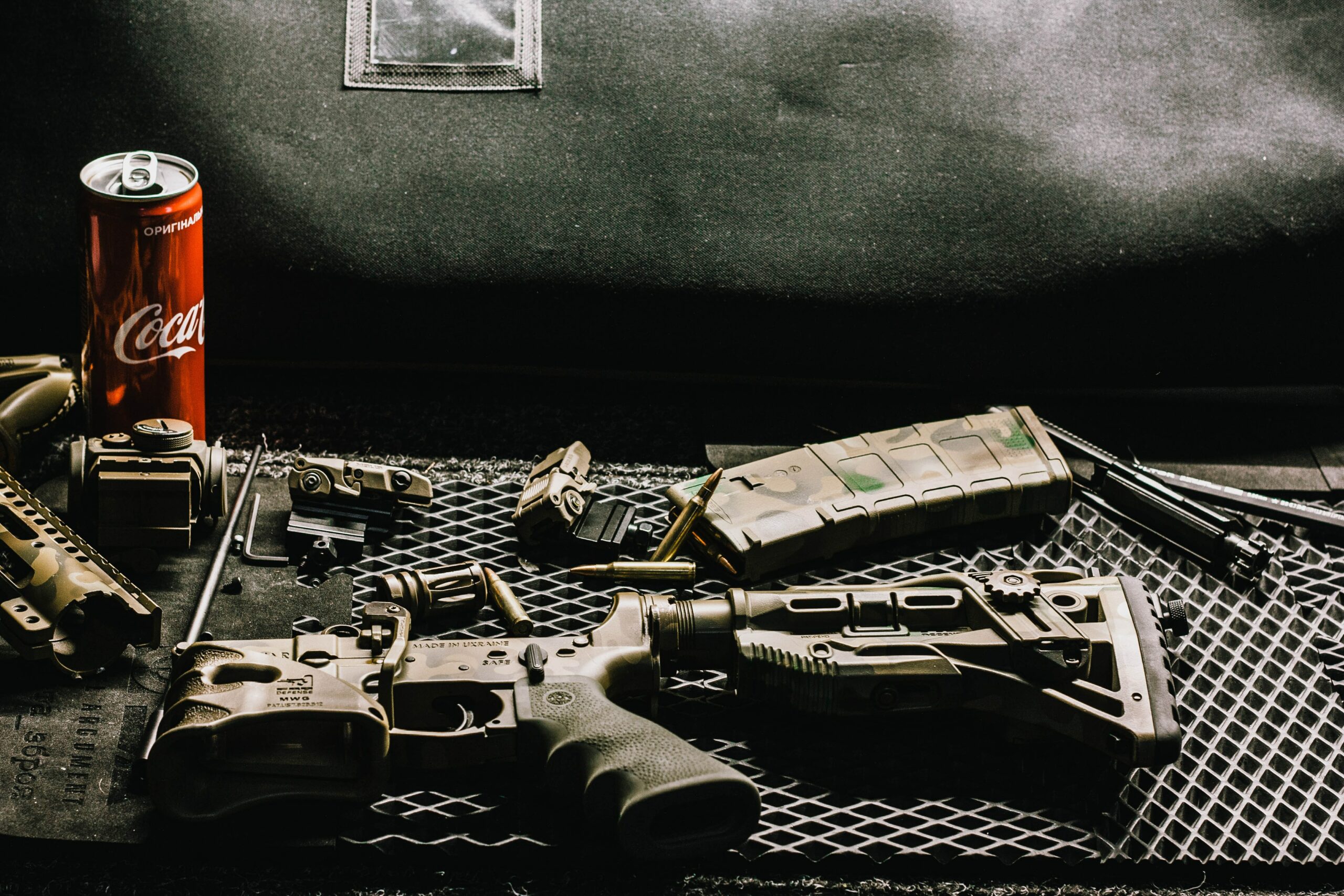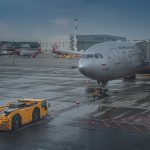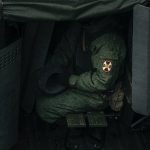The conflict between Ukraine and Russia in the Donbas region began as a divide between Eastern and Western spheres of influence. A potential Association Agreement between Ukraine and the European Union threatened the Russian aspirations in the region. To understand the current conflict one must be aware of the protests taking place during the final months of 2013 and beginning of 2014 in Ukraine, with the EU Association Agreement, the role of the annexation of Crimea and the situation of the distinctive regional identity of the Donbas region.
The Maidan Protests
In order to understand the rift between the East and the West in Ukraine, it is crucial to understand the role which a potential Association Agreement with the EU had on the country’s future. Protests that took place in Kyiv in the final months of 2013, at the Independence Square (the Maidan), were a response to the decision made by the Ukrainian government to not sign an Association Agreement with the EU. The event of not signing an Association Agreement with the EU led to an important rift between Ukraine and Russia, it played a crucial part in the Russian intervention in Crimea. Seen as this event came to be interpreted as a direct threat to Russian interests in the region.
The protests quickly escalated and led to confrontations with security forces which resulted in more than 120 deaths towards the end of February 2014. A major constitutional crisis occurred on February 22nd 2014. The crisis consisted of grievances and demands from distinct groups in society to implement a fundamental reform and change the system of governance. This constitutional crisis (prompted by the protests) led to a vote in the Ukrainian Parliament to remove president Viktor Yanukovych from office. Yanukovych departed for Russia while claiming to still be the legitimate president of Ukraine. The newly-elected Speaker of the Ukrainian Parliament, Oleksandr Turchynov, was appointed acting president of Ukraine in the light of upcoming new elections. However, Russia refused to recognise the change in president, as did Yanukovych himself.
The Annexation of Crimea
At about the same time, pro-Russian armed protests in Crimea, the large peninsula in southern Ukraine, started occurring. The groups largely consisted of armed men with uniforms lacking any identifying marks. These pro-Russian groups surrounded the airports in Simferopol and Sevastopol along with the Crimean parliament building. Pro-Russian lawmakers also installed Sergey Aksyonov, the leader of the Russian Unity Party, as Crimea’s prime minister. During this time, voice and data links between Crimea and Ukraine were cut off and the Russian authorities acknowledged that their troops had moved into the region. Ukrainian president at the time, Turchynov, deemed this action as a provocation and violation of Ukrainian sovereignty, while Russian President Vladimir Putin claimed it was merely a way to protect Russian citizens and military assets in Crimea.
An important disclaimer is that the protests in Crimea, the protests in Kyiv, the annexation of Crimea and the conflict in the region of Donbas are separate events, linked together by Russian intervention. However, while the Crimean peninsula was annected and controlled by Russia, the eastern regions of Donetsk and Luhansk are controlled by pro-Russian separatists and are not “officially” Russian per se.
Crimea itself has really strong ties to both Russian history and culture and consists of a large ethnic Russian population and an overall pro-Russian sentiment. In a referendum on March 16th, an overwhelming 97 per cent voted in favour of joining Russia. The referendum (denounced as illegal by Ukraine, the EU and the United States) only had two options available for the voters: join Russia or enhance the independence of the Crimean peninsula. This shows that there was no option for the peninsula to remain under Ukrainian control. It also displays the influence of the pro-Russian lawmakers in making the referendum as pro-Russian as they could. As highlighted by the Swedish Defence Research Agency (FOI), the voter turnout for the referendum was 83 per cent. The high voter turnout along with the overwhelming support of 97 per cent in favour of joining Russia, takes away the credibility of the very one-sided referendum. This since only 37 per cent of the Crimean population was either Ukrainian or Tatar.
The (Not So) Humble Beginnings of the Conflict in Eastern Ukraine
The political crisis was getting deeper in Ukraine and the security situation quickly deteriorated with an outbreak of an open conflict in the eastern regions. In the middle of April 2014, intensive fighting was taking place between Ukranian government forces and armed forces in the regions of Donetsk and Luhansk. These two regions declared themselves as independent republics and joined a confederation that called itself ”Novorossia” (or ”New Russia”). This goes well in line with the Russian narrative and when referring to the historic region of ”Novorossia” on April 2014, Russian President Putin was referring to the regions of Kharkiv, Dnipropetrovsk, Zaporizhia, Donetsk, Luhansk, Kherson, Mykolaiv and Odesa. At the same time, he was indicating a Russian ambition to cut Ukraine off from the Black Sea and create a land corridor to Moldova, a country in which Russia has been backing separatists in the ”Republic of Transnistria” since 1991. All of the attempted takeovers failed, except the ones in Donetsk and Luhansk. When referring to the Donbas region as “Novorossia”, both the pro-Russian separatists and the Russian regime show that they specifically view this region as Russian and not Ukrainian.
On April 15th 2014 the government in Kiev launched its first formal military offensive against the pro-Russian rebels who had seized government buildings across eastern Ukraine. Not even a month later, the separatists in Donetsk and Luhansk declared independence after holding referendums. Actions to take back control over the territory was described as an anti-terrorist operation by the Office of the Prosecutor General of Ukraine. The two regions of Donetsk and Luhansk were also labelled as terrorist organisations on May 16th 2014.
Source: BBC. A current map over which parts of Donbas are controlled by pro-Russian separatists.
The separatists in eastern Ukraine consisted of several different groups such as local radical Russian nationalists, militia units, members of organised criminal groups, defectors from the Ukrainian Berkut police and secret services, members of oligarchic security services, along with members of a so-called Russian Orthodox Army. They were joined by volunteers from the Caucasus (mostly Chechnya and Central Asia), Cossack formations, militias from Crimea and volunteers from Europe (for instance Serbia). Russia was denying the use of regular Russian soldiers (in the Donbas region, not to be confused with the Crimean annexation) but intervened in the conflict through the use of information warfare, subversion, political and economic pressure and mass propaganda through the use of state television, news and social media, a phenomenon which was later coined as ”hybrid warfare”.
Ukraine, mostly due to economic problems, was severely unprepared, with a defence sector that had been neglected for decades. The Ukrainian defence minister made a statement in March 2014 that only 6000 soldiers were ready for combat. Soon the country, however, managed to gather regular soldiers, police and security service forces, volunteers from units such as the Azov Battalion, people from the nationalist Right Sector and volunteers from abroad.
The Minsk Agreement
On February 12th 2015 leaders of Ukraine, Russia, France and Germany signed the so-called ”Minsk Agreement”. The agreement proposed the cessation of fighting, the withdrawal of heavy weapons, the release of prisoners, and the removal of foreign troops from Ukrainian territory. The truce held and heavy weapons were withdrawn by both sides in September 2015. However, frequent violations of the peace agreement resulted in over 9000 dead and more than 20 000 wounded by the end of 2015. According to the Ukrainian National Defense and Security Council, 300 violations of the ceasefire were reported by the 20th of February the same year. Ukrainian authorities estimated that over 2000 Russian troops had been killed since the beginning of April 2014, when the fighting began. Russian officials kept denying involvement in the conflict and by May 2015 Putin signed a decree banning the release of information about the deaths of Russian soldiers during so-called ”special operations”.
As a response to these violations, the EU extended its sanctions against Russia, due to the country’s actions in Crimea and eastern Ukraine. The sanctions were according to the Kremlin ”unfounded and illegal”.
A Humanitarian Crisis
Human Rights Watch reports that since the war began in eastern Ukraine, at least 3 077 civilians have been killed and over 7000 have been injured. This part of the country also remains as a heavily mine-contaminated area. In 2020, most civilian casualties resulted from mine incidents, along with the handling of explosive remnants of war. The armed conflict is threatening civilians’ physical safety, limiting access to food, medicines, proper housing and education. The COVID-19 pandemic further worsened these negative trends. The travel restrictions imposed by the Russia-backed armed groups in eastern Ukraine and by Ukrainian authorities in response to the pandemic negatively affected economic and social rights and drove civilians even deeper into poverty. Older people, women, children and people with disabilities were most affected by these trends.
The Current Situation
In March this year, NATO voiced concern over a significant Russian build-up near eastern Ukraine. Russia on the other hand is warning that an escalation of the conflict in Donbas could ”destroy” Ukraine. Both Moscow and Kyiv have for a long period of time been accusing each other of failing to implement the peace deal in eastern Ukraine. The relations are even more complicated due to the fate of the Nord Stream 2 gas pipeline to Germany, a project which Kyiv and Washington want to halt.
Furthermore, Ukraine, Western countries and NATO accuse Russia of sending troops and heavy weaponry to help its proxies in Donbas who seized parts of eastern Ukraine back in 2014. Russia on the other hand, claims that it only provides political and humanitarian support to separatist fighters in what they deem as an internal conflict.
In a survey conducted by the Washington Post at the beginning of 2021, through the use of telephone interviews, showed that in the Ukrainian-controlled part of Donbas, a large majority wants to see the separatist regions return to Ukraine without any consideration of autonomy. The opposite can be seen in the breakaway territories controlled by the Donetsk and Luhansk People’s Republics (DNR/LNR), in both territories more than half of the respondents want to join Russia, either with or without some autonomy, less than one-tenth want independence and only 12 per cent want to be reintegrated back into Ukraine.
Results of the Washington Post survey on the future status of the Donbas region.
When asked about who is to blame, the respondents in DNR/LNR blame either the Ukrainian government or the West for the conflict. In the Ukrainian-controlled territories, a majority of over 30 per cent blames the Russian and Ukrainian governments equally.
Results of the Washington Post survey on who is to blame for the conflict in Donbas.
Future Prospects for Eastern Ukraine
It is unlikely that the Ukrainian Parliament will grant the regions sufficient influence over Ukrainian domestic and foreign policy, just to please Russia. A probable result is the continuance of the status quo, along with a frozen conflict rather than an open one. For Ukraine, the war has become a burden on an economy already struggling with corruption and bureaucracy. Ukraine has immense problems with corruption with a really low score of 33/100 (where 100 is the ”cleanest” score) in the Corruption Perceptions Index from 2020. But the conflict has united the people and reinforced a previously weak national identity and unity while showing a growing concern with how the Ukrainian government is handling the conflict.
In Russia, Putin has managed to create more political stability and following the narrative of the Russian propaganda machinery, ”saved” the pro-Russian ethnic minorities in the Donbas region from joining NATO and the EU. But on the other hand, he has managed to worsen relations with Ukraine, its close neighbour and a potential ally against the western powers. The war has been a costly endeavour for Russia, both when it comes to sponsoring the ”volunteers” in the separatist parts, but will continue to be even more expensive if the separatist regions were to join Russia permanently.
A potential rift can also be seen within the EU with regards to handling the crisis and when applying sanctions on Russia. Even though the EU and NATO have managed to uphold their sanctions against Russia for over five years, countries such as France and Hungary are increasingly calling for the end of sanctions. Hence, a cold war scenario is likely to take place. Sanctions might be a way of punishing Russia for a breach of the Minsk ceasefire agreement. But each actor’s interest in the region and disagreements among the EU and Ukraine might lead to a long-term frozen conflict since neither Russia nor Ukraine has expressed willingness to compromise. An open war, on the other hand, would prove disastrous and costly, both economically and politically for all parties involved.

Magdalena Kamont
Master student of the "International Administration and Global Governance" programme at the University of Gothenburg. Currently writing her master thesis on democratic decline in Poland. Former intern at Sida.





